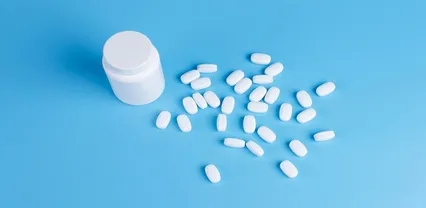Taking sulfonylureas sold as “street Valium” can lead to severe hypoglycemia that may result in emergency department (ED) visits, the latest of a handful of case reports suggests.
“Physicians should be aware of this possibility and consider intentional or unintentional sulfonylurea abuse, with or without other drugs,” Amanda McKenna, MD, a first-year endocrinology fellow at the Mayo Clinic, Jacksonville, Florida, and colleagues say in a poster presented at the American Association of Clinical Endocrinology (AACE) Annual Meeting 2023.
The new case, seen in Florida, involves a 33-year-old man with a history of narcotic dependence and anxiety but not diabetes. At the time of presentation, the patient was unconscious and diaphoretic. The patient’s blood glucose level was 18 mg/dL. He had purchased two unmarked, light blue pills on the street, which he thought were Valiums but turned out to be glyburide.
Sulfonylureas have no potential for abuse, but they physically resemble Valiums and are easier for illicit drug dealers to obtain because they’re not a controlled substance, and they can be sold for considerably more money, McKenna told Medscape Medical News.
“He thought he was getting Valium, but what he really purchased was glyburide…. When he took it, he developed sweating and weakness. He probably thought he was having a bad trip, but it was really low blood sugar,” she said.
Similar Cases Go Back Nearly Two Decades
Similar cases have been reported as far back as 2004 in different parts of the United States. A 2004 article reports five cases in which people in San Francisco were “admitted to the hospital for hypoglycemia as a result of a drug purchased on the streets as a presumed benzodiazepine.”
Two more cases of “glyburide poisoning by ingestion of ‘street Valium,” ‘ also from San Francisco, were reported in 2012. And in another case presented at the 2022 Endocrine Society meeting, sulfonylurea had been cut with cocaine, presumably to increase the volume.
The lead author of the 2012 article, Craig Smollin, MD, medical director of the California Poison Control System, San Francisco Division, and professor of emergency medicine at the University of California, San Francisco, told Medscape Medical News that his team has seen “a handful of cases over the years” but that “it is hard to say how common it is because hypoglycemia is common in this patient population for a variety of reasons.”
Persistent Hypoglycemia Led to the Source
In the current case, paramedics treated the patient with D50W, and his blood glucose level increased from 18 mg/dL to 109 mg/dL. He regained consciousness but then developed recurrent hypoglycemia, and his blood glucose level dropped back to 15 mg/dL in the ED. Urine toxicology results were positive for benzodiazepines, cannabis, and cocaine.
Laboratory results showed elevations in levels of insulin (47.4 mIU/mL), C-peptide (5.4 ng/mL), and glucose (44 mg/dL). He was again treated with D50W, and his blood glucose level returned to normal over 20 hours. Once alert and oriented, he reported no personal or family history of diabetes. A 72-hour fast showed no evidence of insulinoma. A sulfonylurea screen was positive for glyburide. He was discharged home in stable condition.
How many more cases have been missed?
McKenna pointed out that a typical urine toxicology screen for drugs wouldn’t detect a sulfonylurea. “The screen for hypoglycemic agents is a blood test, not a urine screen, so it’s completely different in the workup, and you really have to be thinking about that. It typically takes a while to come back,” she said.
She added that if the hypoglycemia resolves and testing isn’t conducted, the cause of the low blood sugar level might be missed. “If the hypoglycemia doesn’t persist, the [ED] physician wouldn’t consult endocrine…. Is this happening more than we think?”
Ocreotide: A “Unique Antidote”
In their article, Smollin and colleagues describe the use of ocreotide, a long-acting somatostatin agonist that reverses the insulin-releasing effect of sulfonylureas on pancreatic beta cells, resulting in diminished insulin secretion. Unlike glucose supplementation, ocreotide doesn’t stimulate additional insulin release. It is of longer duration than glucagon, the authors say.
“The management of sulfonylurea overdose includes administration of glucose but also may include the use of octreotide, a unique antidote for sulfonylurea induced hypoglycemia,” Smollin told Medscape.
However, he also cautioned, “There is a broad differential diagnosis for hypoglycemia, and clinicians must consider many alternative diagnoses.”

